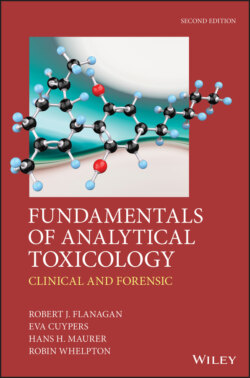Читать книгу Fundamentals of Analytical Toxicology - Robin Whelpton - Страница 24
1.3.1 Samples and sampling
ОглавлениеIn analytical toxicology, clinical chemistry, and related fields, the words ‘sample’ and ‘specimen’ are used to denote a portion of a body fluid, tissue, incubation medium, etc. obtained under defined conditions. The samples encountered may range from relatively pure solutions of a drug to a piece of putrefying tissue. Liquids, such as blood, oral fluid (principally saliva), urine, and cerebrospinal fluid (CSF), are generally easier to sample and to analyze than solids and semi-solids, which require homogenization or digestion prior to analysis.
Blood plasma or serum is used in clinical work if quantitative measurements are needed in order to assess dosage or monitor treatment as in TDM. Urine is commonly used in qualitative work such as substance misuse screening because collection is non-invasive and the concentrations of many drugs and their metabolites tend to be higher than in blood, thereby facilitating analyte detection. Further aspects related to samples and sampling are discussed in Chapter 2.
